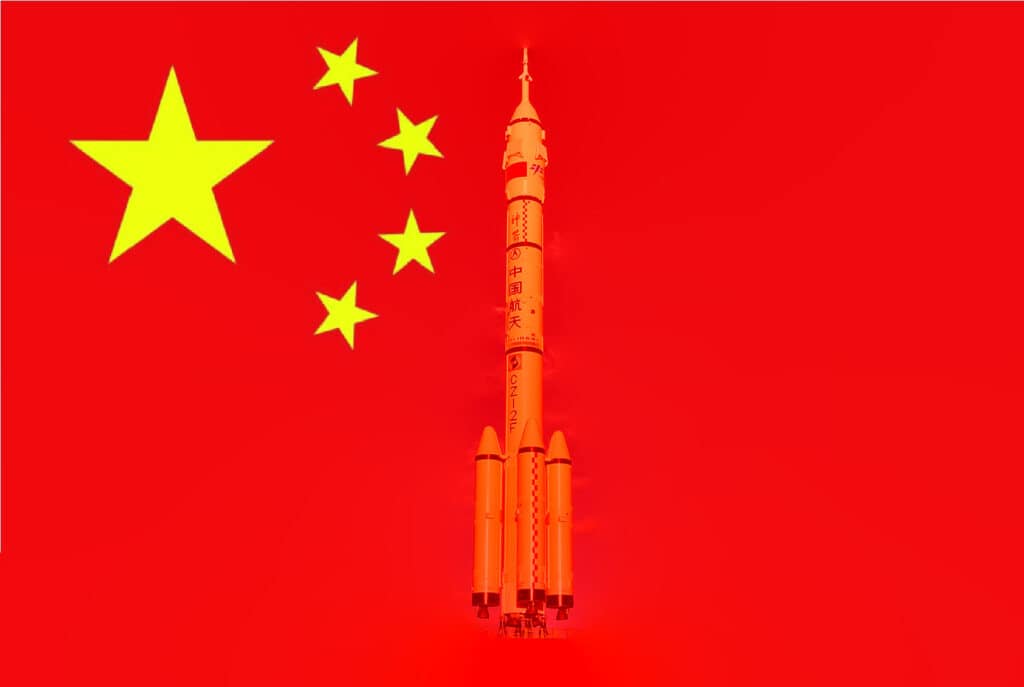Table of Contents
China’s Space Program
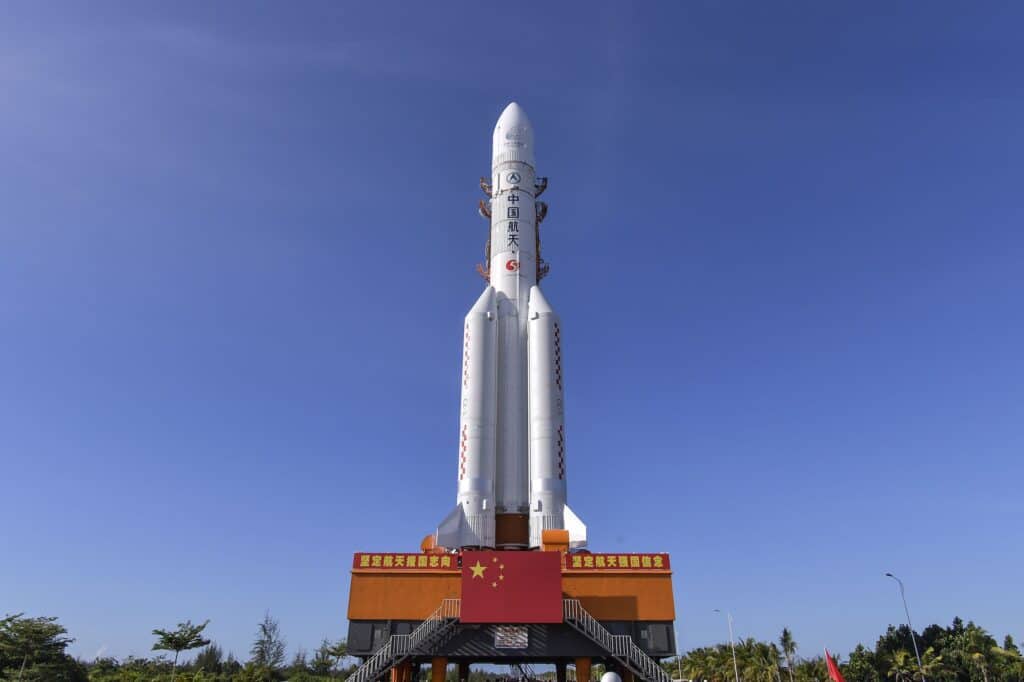
China’s space program started in 1956 when the ‘Ministry of National Defense’ started developing programs to develop ballistic missiles and launch vehicles. Later, the space program came under the ‘Ministry of Machine Building’. In 1983, the ‘Ministry of Aerospace Industry’ took charge of China’s space program. In 1993, the ‘Ministry of Aerospace Industry’ was restructured and divided into two separate independent corporations – ‘China Aerospace Science and Technology Corporation’ and ‘China National Space Administration’. ‘China Aerospace Science and Technology Corporation’ was later divided into various smaller public subsidiaries that take care of various independent and interdependent functions. Meanwhile, the ‘China National Space Administration takes care of planning, policy-making, foreign collaboration, and quality control.
The first major space success for China came in 1970 when China’s space program was able to put satellite – ‘Dong Fang Hong 1’ into the orbit of Earth using the ‘Long March -1’ rocket. China’s space program started to move very fast and during the 1960s and 1970s, Chinese top leadership decided to give a push to the Chinese space ambition by setting up space medical research and human space flight programs. In 1975 China’s space program sent the first recoverable satellite into space using the Long March-2 rocket. This endeavor allowed China to become only the third country (after the US and the former Soviet Union) to be able to launch and recover a satellite.
In the 1980s China started its economic liberalization and with it, China’s space program flourished. With increasing economic activities, demand for communication satellites increased. During this time China’s space program launched various communication satellites. China’s space program has also developed advanced versions of ‘Long March’ rockets. In the 1990s, China’s space program started its commercial satellite program.
However, in 1996, the ‘Long March’ rocket faced two failures one of which caused loss of life as the rocket veered off and crashed into a village. After that, the Chinese government initiated strict quality control in the space program. The Government also did some necessary restructuring. Since then, China’s space program entered into a new era of achievements. Even though there were some hiccups, China’s space program achieved some great milestones and became one of the leading candidates in space exploration. So here are the 5 incredible achievements of China’s space program.
1. Tianwen-1: Third Country to Soft-Land on Mars
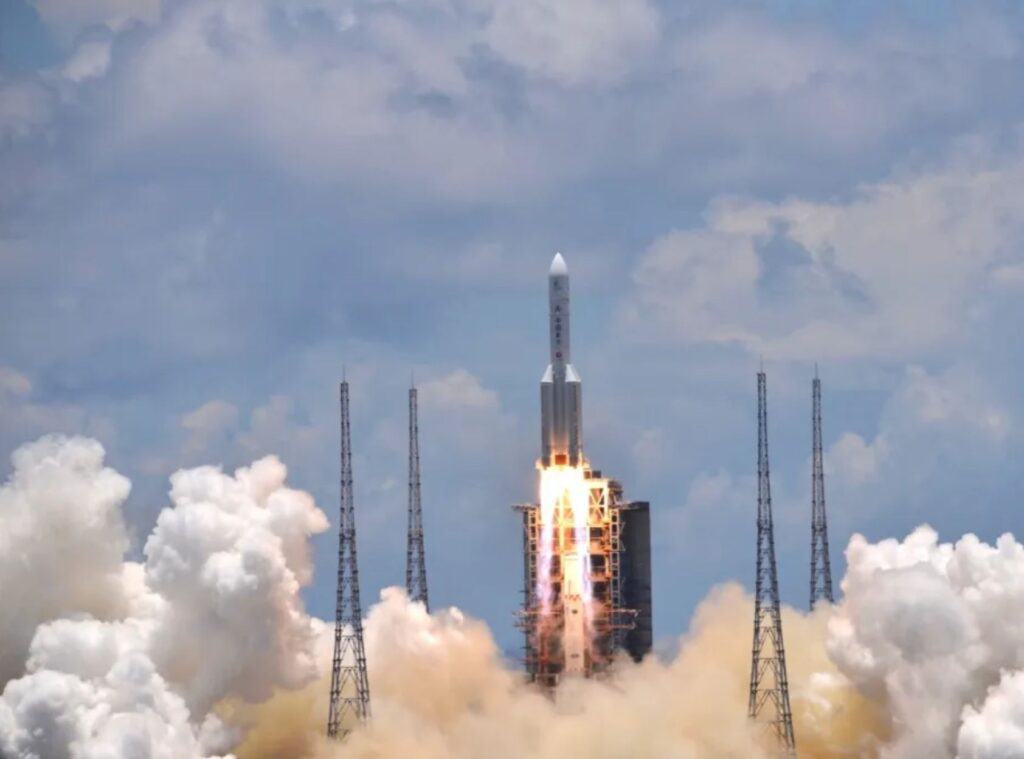
Launch of Tianwen-1
Tianwen-1 is the first Mars mission of China’s space program. The Mars mission was launched on 23rd July 2020 using a ‘Long March 5’ heavy-lift launch vehicle. The mission carried a total of 6 spacecraft – ‘Zhurong’ rover, a lander, three cameras (one remote and two deployable on Martian soil), and an orbiter. Till now, it is the heaviest interplanetary space mission launched by mankind. On board the mission, there was a total of 14 scientific equipment that were used to explore the Martian environment.
The Tianwen-1 mission was launched and administered under ‘China’s National Space Administration’. It was launched from the ‘Wenchang Spacecraft Launch Site’ and it reached Martian orbit in February 2021. Then the mission surveyed the Martian environment and the landing site. Then in May 2021, the lander and the rover landed on Martian soil. With this China became the third country to do a soft landing on Mars. On 22nd May 2021, The ‘Zhurong’ rover touched the Martian soil from the lander and successfully drove through Martian soil. With this feat, China became the 2nd nation (after the USA) to navigate a vehicle on Martian soil.
It is the biggest achievement of China’s space program. With this, it showcased its capabilities to do an interplanetary mission and successfully soft land a robotic vehicle in an alien landscape. The mission’s primary objective was to showcase China’s technological ability to operate a spacecraft on an alien planet. It also established China’s expertise in interplanetary and satellite communication.
The other objectives of the Tianwen-1 mission were to study the geological properties of Mars, soil structure, and mineral composition. It investigated the riverbeds, volcanos, and poles of Mars. It collected data regarding the ions of the Martian environment, seasons, atmosphere, and magnetic field. It also studied the possibilities of the existence of past life on Mars, the existence of water ice, and the evolution of its topography.
Once Mars had rivers that were overflowing on the Martian surface with liquid water. But later due to various reasons, the liquid water disappeared. Now, in current Mars, water exists in vapor or ice form. However, during certain times, especially during Martian summer, liquid water may exist briefly. Scientists have found evidence that suggests the brief presence of liquid water further to the north or south of the equator.
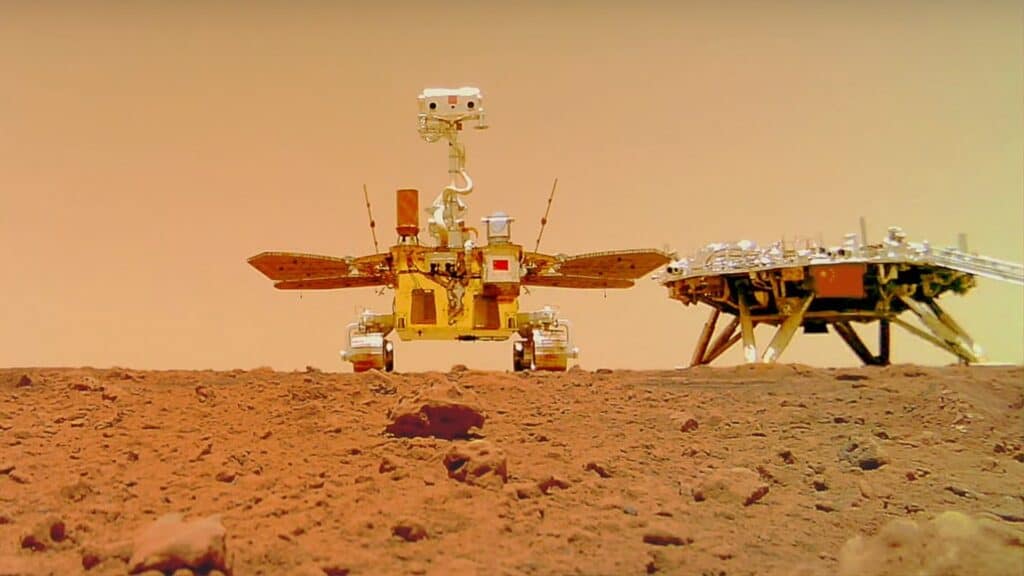
Zhurong Rover and Lander of Tianwen-1
However, the data collected by the ‘Zhurong’ rover, which is investigating the ‘Utopia Planitia’ region of Mars, may suggest that there is liquid water in ‘Utopia Planitia’ and hence liquid water may exist in the lower or mid-latitude areas of Mars. Incidentally, ‘Utopia Planitia’ is an impact basin that is located in the mid-latitude area of Mars and may contain solid ice beneath the surface. Zhurong has also found mineral deposits on the surface that suggest the existence of an ancient ocean in the ‘Utopia Planitia’ religion.
Tianwen-1 is also a stepping stone for China’s space program for further Mars missions. China is looking to bring back a sample of Mars to Earth that may provide some extremely valuable insight into Mars’s past, the presence of liquid water on ancient Mars, the probability of the presence of liquid water on current Mars, and the possibilities of human habitation on Martian soil.
2. Tiangong Space Station: Third Country to Have an Independent Space Station
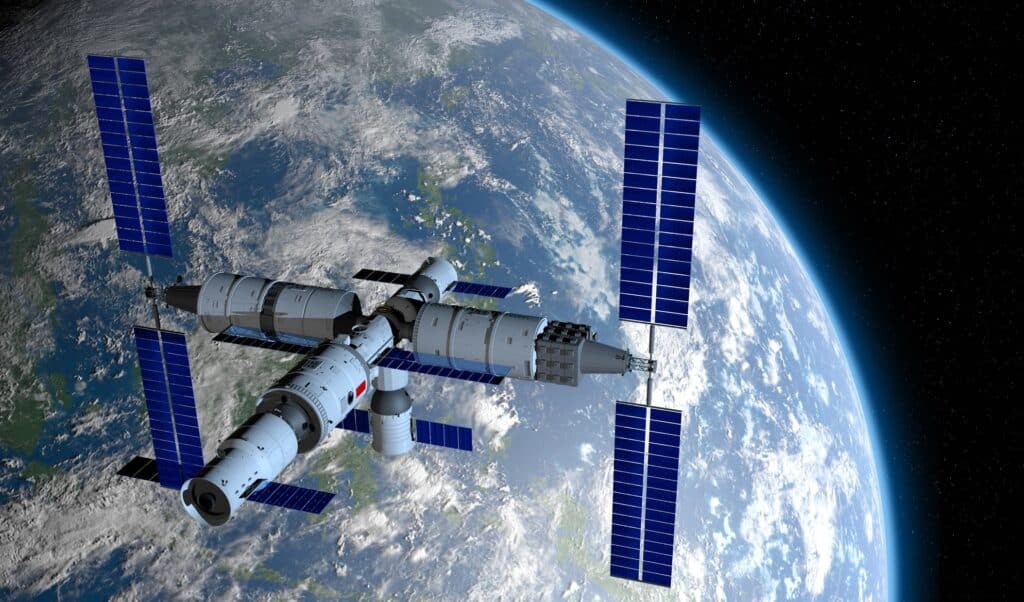
Tiangong Space Station
China is only the third country (After Soviet Russia and the USA) that has launched and operated a space station. In fact, in 2023, China’s Tiangogn space station is only one of two space stations (the other one is ISS – International Space Station) that are still in operation. Russia’s space station MIR was retired in 2001 after it was deorbitted. It is important to remember that the ISS is a joint space collaboration between various countries – the European Union, the USA, Russia, Japan, and Canada.
The journey of the Tiangong space station started in 2011 when Tiangong-1, the first experimental space station of China’s space program, was launched into space. Tiangong-1 successfully demonstrated the ability of China’s space program to successfully operate space rendezvous and docking maneuvers. Space rendevous is a set of techniques through which two spacecraft, orbiting at the same orbital space, come very close to each other so that docking maneuvers can be conducted on them. That way massive space stations can be built in the space.
A total of three space rendezvous and docking maneuvers were conducted on the Tiangong-1 space station. Out of the three, the first one was uncrewed and the next two were crewed which brought the first Chinese female astronaut or taikonaut – Liu Yang– into space. Tiangong-1 was supposed to have a lifespan of two years but it stayed in orbit till 2018. In 2016 China’s space program lost all communication with the space station and in 2018 it reentered Earth’s atmosphere and burned down in the South Pacific Ocean.
Tiangogn-1 was followed by Tiangong-2 which, just like its predecessor, was an experimental space station. It was launched in 2016 and operated till 2019. During its time, one crewed mission – ‘Shenzhou-11’ and a resupply mission – ‘Tianzhou-1’ were successfully conducted. ‘Shenzhou-1’ carried two Chinese astronauts who, upon reaching Tiangong-2, conducted various scientific experiments in the field of gamma-ray bursts, atomic clock, weightlessness in space, human psychology tests, etc. Tianzhou-1 conducted yet another successful docking maneuver and refueled the Tiangong-2.
After the success of Tiangong-1 and Tiangong-2, China’s space program launched its third-generation space station – ‘Tianhe’ – in 2021. It formed the core module of the Tiangong space station. It has a habitat section, a non-habitat section, and a docking module. It can sustain three astronauts on board. The habitat section is equipped with a living area, a kitchen, a toilet, various scientific and communication equipment, air-conditioning, and fire suppressants.
The module is powered by solar energy and the fuel for propulsion is provided by the resupply missions. Till now 4 resupply missions and 6 crewed missions have been conducted for Tianhe. Two module missions – ‘Wentian’ and ‘Mengtian’ – were successfully launched and docked with the core module. Both modules were laboratory modules that extended the functionalities of the core module.
3. Chang’e 3 & Chang’e 4: Third Country to Soft-Land on Moon

Chang’e-4 and Chang’e-3
The Chang’e project is an ongoing lunar exploration mission by China’s space program. The mission is operated by the ‘China National Space Administration’. The first step of the mission was to send Chang’e-1 in 2007 which was an orbiter mission. The mission (Chang’e) is named after the Goddess of the Moon in Chinese mythology. Next, in 2010, Chang’e-2 was sent to lunar orbit. Both these missions showcased the capabilities of China’s space program to send and operate an orbiter mission to our nearest celestial object – the Moon.
However, the crucial step of this lunar mission was Chang’e-3. Unlike the previous two missions, Chang’e-3 was equipped with a lander and a rover named – ‘Yutu’ – named after the mythological rabbit that is the pet of the moon Goddess. Chang’e-3 was launched on 1st December 2013 by the ‘Long March 3B’ rocket. It landed on the surface of the moon on 14th December 2013 – making China only the third country (After the USA and Soviet Russia) to soft-land on the moon.
After the success of the Chang’e-3, China’s space program launched Chang’e-4 on 7th December 2019. The spacecraft entered the Moon’s orbit on 12th December 2013 and landed on the far side of the moon on 3rd January 2019 – making China the first country to land on the far side of the moon. It is one of the biggest achievements of China’s space program. The Chang’e-4 mission landed on an impact crater called ‘Von Karman’ which is a relatively newer impact crater created due to asteroid impacts on the moon. This impact crater is situated within the larger and older impact crater named – Aitken Basin.
Aitken Basin stretches across 2,500 km and it is one of the oldest and largest geological features on the moon. It is believed by scientists that this ancient impact basin has revealed the moon’s mantle. The Yutu-2 rover of the Chang’e-4 may have detected the materials from deep within the moon’s mantle. It is being reported that the composition of the soil near the basis has different features compared to the crust of the moon. This information could shed light on the formation of the moon and the creation of our solar system.
However, the biggest accomplishment of Chang’e-4 is the sprouting of a plant from its seed in the alien environment of the moon. The mission carried a small sealed pod that was carrying seeds of cotton, potato, arabidopsis, etc. The mission was also carrying some fly eggs and yeast. Astronomers grow various plants in space stations but it was never done before on another celestial object. Among all, the cotton seeds sprouted. The experiment was to see if the low gravity and cold environment can produce sprouting. This could prove very important for space habitation and space agriculture.
All in all, the Chang’e-4 mission was a step forward for China’s space program which slowly but steadily is creating various technologies and processes that will make space exploration easier and human habitation on other planets a reality.
4. Chang’e-5: Third Country to Conduct Successful Moon Sample-Return Mission
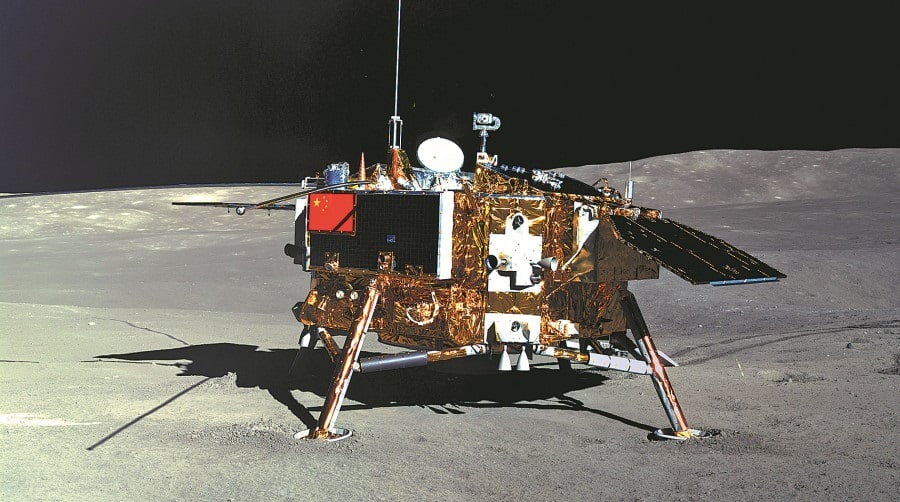
Change-5
Chang’e-5 mission is the fifth lunar mission by China’s space program and the first moon sample-return mission. It builds on the success of previous lunar missions by China’s space program. However, unlike the other 4 lunar missions, this mission was special as it successfully returned with the moon’s rock sample -making China only the third country to successfully conduct a moon sample-return mission. Previously USA and Russia were the only two countries that were able to return with the moon’s sample. The USA did this through both crewed and robotic missions while Russia conducted robotic missions to collect the moon sample.
Apart from moon sample return, Japan and the USA had successfully collected samples from asteroids and comets. Russia and Japan collected particle samples from LEO or low-earth orbit. These sample missions were very important for humanity as these samples are helping us uncover the secrets of the origin of the solar system. These moon and asteroid samples have helped us learn more about the formation of our own Earth and moon. These samples have also shed light on the configuration of the moon, asteroids, and comets. That way we will learn about the mineral composition of these celestial objects. In the future, humanity could look to harness these celestial objects for various minerals, rare Earth materials, metals, etc.
Chang’e-5 mission was inducted by the ‘China National Space Administration’. It was launched on November 2020 and it reached the moon on December 2020. Chang’e-5 had a total of four components – lander, ascender, orbiter, and returner. The lander is the component that landed on the surface of the moon after getting separated from the orbiter which kept on orbiting the moon while waiting for the sample to return. The lander was equipped with the ascender on top, a drill machine, and a spooning device. After the drilling machine drilled the lunar sample, the spooning device spooned out the sample.
Once the sample was successfully collected, the ascender blasted off from the lunar surface and docked with the orbiter. It delivered the moon sample and intentionally fell to the lunar surface. Then the orbiter journeyed towards the Earth. After reaching Earth’s atmosphere, the orbiter released the returner and it landed on Earth on 16th December 2020. The mission had returned with approximately 1,700 gm of the moon’s sample. To date, It is one of the crowning achievements of China’s space program.
5. Shenzhou-5: Third Country to Send Human in Space on Its Own Spaceship
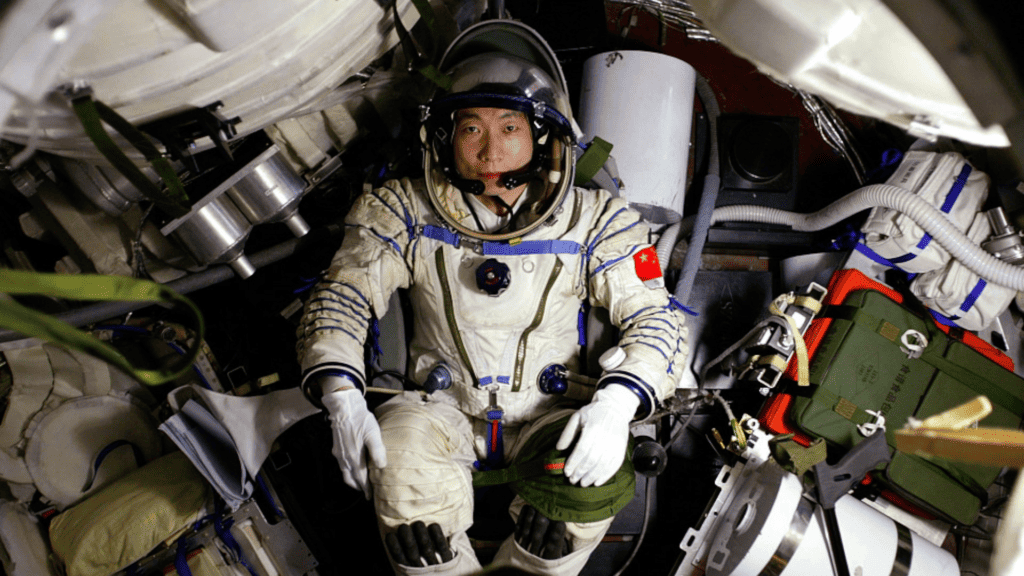
Yang Liwei Aboard Shenzhou-5
A total of 46 countries have sent their astronauts into space. However, till 2003, only USA and Russia were the only two countries that had the capability of sending human into space on their own spacecraft. In October 2003, China became only the third country that send astronauts or taikonauts into space. On 15th October 2003, Shenzhou-5 was launched from the ‘Jiuquan Satellite Launch Center into space on the ‘Long March 2F’ rocket. Aboard the spacecraft was Yang Liwei. At that time he was a Lieutenant Colonel in China’s ‘People’s Liberation Army’.
China’s space program started its initial research on the feasibility of a human space flight mission way back in 1968. In 1992, it created the ‘China Manned Space Program’ to oversee the human space flight program. In 1998, the ‘Beijing Aerospace Flight Control Center‘ was formed for launching and navigating the ‘Shenzhou’ spacecraft that was specifically built for human space flight missions. In November 1999, the first version of the ‘Shenzhou’ space flight aboard the ‘Long March 2F’ rocket was successfully blasted off into space. This uncrewed mission successfully went to space and after orbiting Earth, it reentered Earth’s atmosphere and successfully landed on Earth.
In January 2001, the second spacecraft of human space flight, ‘Shenzhou-2’ was successfully launched. This unmanned mission tested the critical life support system. In 2002, China’s space program successfully conducted the launch of both the ‘Shenzhou-3’ and ‘Shenzhou-4’ spacecraft into space. Just like the previous two missions, both these missions were uncrewed. While ‘Shenzhou-3’ tested the emergency escape module successfully, ‘Shenzhou-4’ was equipped with all the necessary systems for a crewed mission.
After the success of four Shenzhou missions, the first crewed mission ‘Shenzhou-5’ was launched using the ‘Long March 2F’ rocket with Yang Liwei on board the spacecraft. It reached almost 340 km above Earth and orbited Earth 14 times. Yang Liwei spent almost 21 hours in the space. Then on 16th October 2003, it reentered the Earth’s atmosphere and landed successfully with Yang Liwei. Since ‘Shenzhou-5’, 12 more missions of ‘Shenzhou’ spacecraft (‘Shenzhou-6’ to ‘Shenzhou-17’) were carried out successfully. Except for ‘Shenzhou-8’, all other 11 missions were crewed. Till now, China’s space program has successfully sent 20 Chinese astronauts or taikonauts to space.
With all these successful crewed missions, China has showcased its ability to operate human space flights. The next step for China will be to carry out crewed missions to the Moon and Mars. This will be a step forward towards the goal of creating human settlements on the Moon and on Mars.
Read More
- Top 6 Amazing Sources of Vitamin C (Fruits and Vegetables) That You Can’t Avoid
- Oranges: 11 Incredible Facts About This Tangy Citrus Fruit
- NASA’s MOXIE Creates O2: Big Step Towards Mars Colonization
- Lemons: 8 Astounding Facts About This Remarkable Super Fruit
- With Chandrayaan 3 Success, India Basks in Pride and Glory
- Top 5 Bitter Vegetables That Are Incredible For Our Health
- Grapefruit: 8 Incredible Facts About This Amazing and Tasty Superfruit
- Top 5 Amazing Properties of Time That Defy Common Sense
- Top 5 Important Citrus Fruits That You Should Know About
- 10 Factors for Emergence of Intelligent Life in The Universe
- Top 4 Important Vegetable Groups That You Should Be Aware Of
- Discoveries by JWST: 10 Incredible Findings of The Telescope
- Space Science: 6 Vital Reasons Why We Should Invest in It
- Solar System: 10 Astonishing Uniqueness of our star system
- Our Universe: An Incredible Journey of 13.7 Billion Years
- Indian Gooseberry (Amla): 10 Amazing Facts About This Wonder Fruit
- Top 6 Solar System Objects That Might Destroy Life On Earth
- The Great Physicist Peter Higgs Passes Away at 94
- Certain End of The Universe: 4 Forces of Nature to Watch Out For
- Big Bang: An Incredible Start of Universe 14 Billion Years Ago

